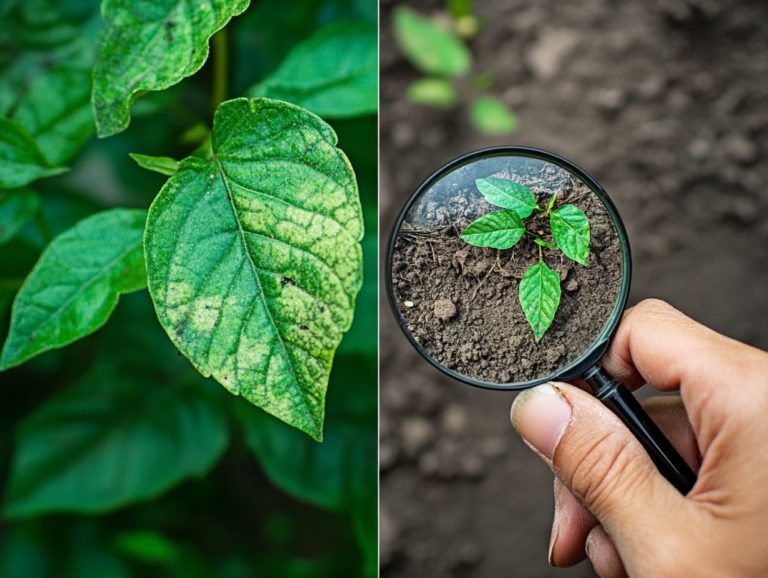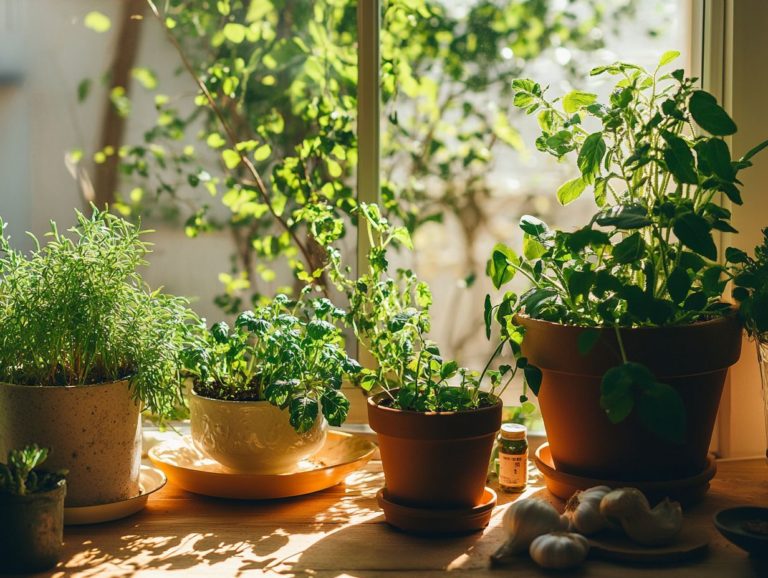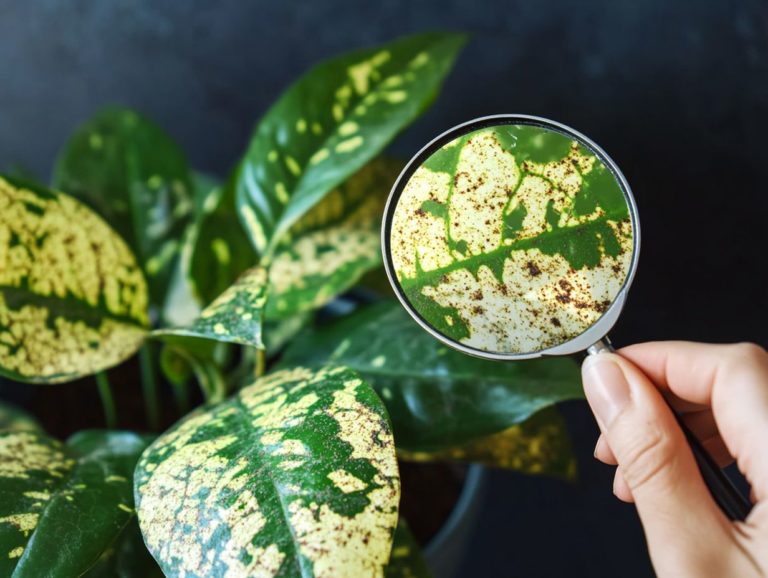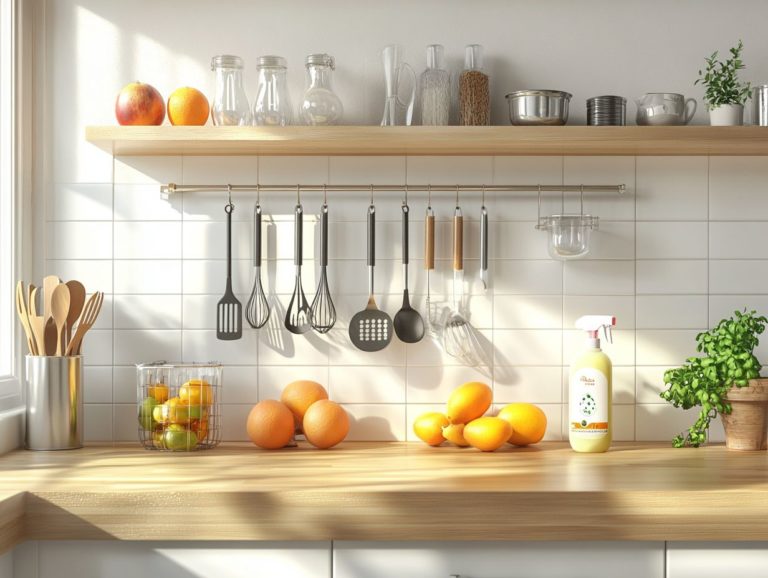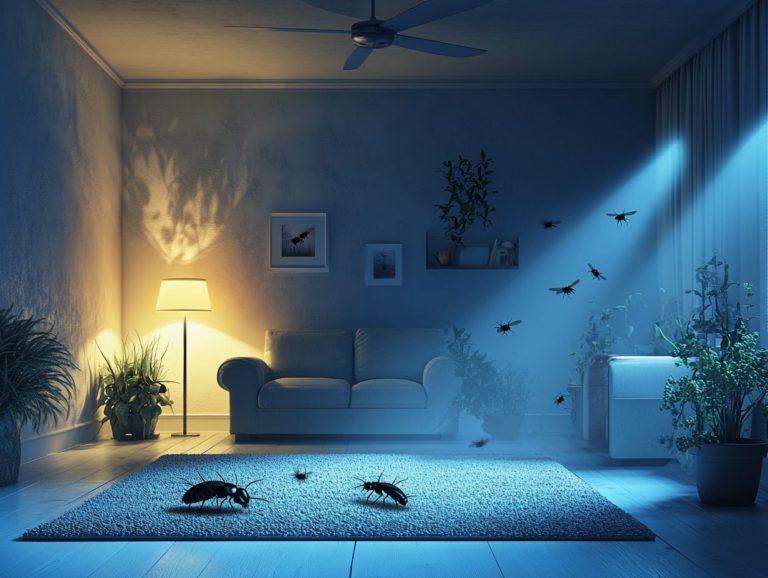5 Best Indoor Plants Resistant to Pests
Bringing greenery into your home not only enhances its aesthetic appeal but also helps clean the air and improves your overall well-being. This makes it essential for creating a green energy environment.
Dealing with pests can certainly put a damper on your indoor gardening journey. However, there s no need to worry about pest management when you choose pest-resistant plants!
Let s explore five resilient indoor plants the Snake Plant (Sansevieria), Spider Plant, Peace Lily, Aloe Vera, and Chinese Evergreen (Aglaonema). These hardy plants are visually striking and resistant to pests. They make great houseplants for your indoor spaces!
Learn how these plants keep pests at bay, along with practical tips for plant care to prevent infestations. You ll also discover how to seamlessly incorporate them into your decor with decorative plants.
Elevate your indoor gardening experience today!
Contents
- Key Takeaways:
- 1. Meet the Snake Plant!
- 2. Discover the Spider Plant!
- 3. Peace Lily
- 4. Aloe Vera
- 5. Chinese Evergreen
- Why Are These Indoor Plants Resistant to Pests?
- Frequently Asked Questions
- What are the 5 best indoor plants that are resistant to pests?
- Why are spider plants resistant to pests?
- How does lavender help repel pests?
- What makes snake plants resistant to pests?
- Do marigolds attract pests?
Key Takeaways:
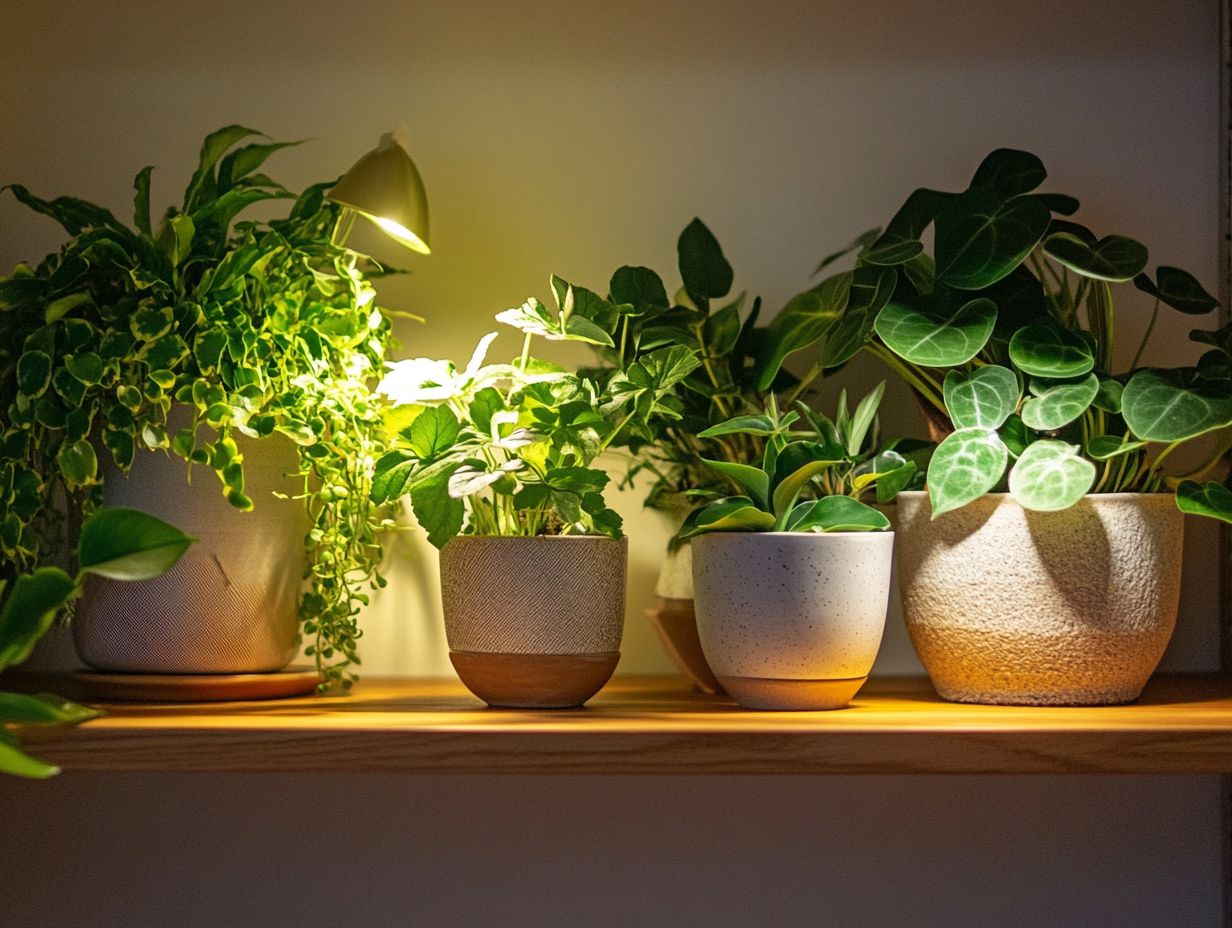
- These plants repel pests naturally, keeping your home healthy!
- Low maintenance: These plants require minimal care, making them perfect for adding greenery without the hassle.
- Beauty: In addition to being pest-resistant, these indoor plants add a touch of elegance to your decor, showcasing unique patterns.
1. Meet the Snake Plant!
The Snake Plant, or Sansevieria, is a beloved houseplant that thrives beautifully in various indoor spaces. It also serves as a natural repellent to common pests.
Its impressive ability to help clean the air and remarkably low maintenance needs make it an ideal choice for both novice and seasoned indoor gardeners.
This resilient plant flourishes in a range of lighting conditions, from dim corners to bright indirect sunlight. This versatility makes it suitable for various environments including office spaces.
It prefers moderate humidity but can easily adapt to dry air, fitting seamlessly into most indoor climates. When selecting soil, opt for a well-draining potting mix.
The Snake Plant does not require frequent watering, which is crucial in preventing root rot. With its stunning dark green leaves often graced with lighter green patterns, it adds a chic touch to any room.
Its natural resistance to pests means this decorative gem stays low-maintenance, whether in your home or office, making it a fantastic addition to your plant varieties.
2. Discover the Spider Plant!
The Spider Plant stands out for its captivating appearance and pest-resistant qualities. It s a top choice for houseplant enthusiasts who appreciate easy-to-grow options.
This resilient plant thrives in indirect sunlight. It shows impressive adaptability to both bright and moderate lighting conditions.
Its watering needs are straightforward; it thrives on infrequent watering, preferring to dry out slightly between sessions.
Renowned for its air-purifying properties, the Spider Plant effectively eliminates common toxins, enhancing indoor air quality. This blend of low maintenance and functional benefits ensures it remains an ideal choice for anyone looking to invigorate their home effortlessly with pet-friendly plants.
Start your green journey today with these fantastic plants!
3. Peace Lily
The Peace Lily is a stunning and highly sought-after indoor plant, celebrated for its elegant white blooms and impressive air purification abilities. It’s a favorite for enhancing indoor spaces, especially since it’s non-toxic to pets perfect for pet owners who prioritize safety and want to integrate a variety of decorative plants into their home.
This plant charms with its appearance and thrives in low-light conditions. It’s an ideal choice for rooms that don t bask in sunlight, making it perfect for those with less optimal lighting. Its preference for keeping the dirt a little wet but not soaked means you should aim to maintain consistent soil moisture. By carefully monitoring its hydration needs, you can ensure your Peace Lily truly flourishes!
Beyond its practical care requirements, the lush greenery and striking white flowers add a touch of sophistication to any indoor garden. It instantly creates a calm and inviting atmosphere in your home and enhances your indoor air quality.
4. Aloe Vera
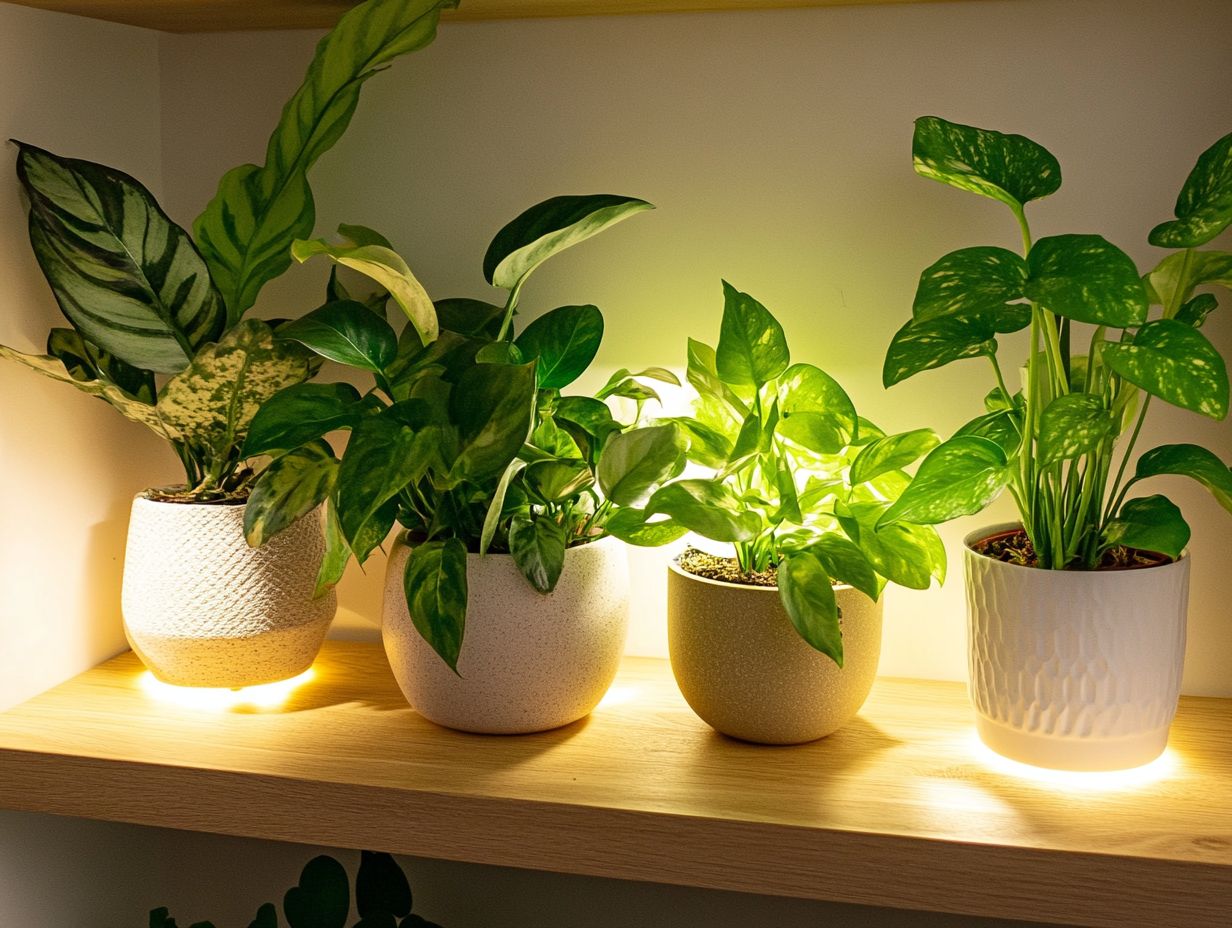
Aloe Vera is a must-have for your indoor garden! This remarkable succulent flourishes in drought conditions and is celebrated for its healing properties and pest-repellent abilities, making it a fantastic addition to your indoor gardening collection.
To ensure optimal growth, this resilient plant prefers bright, indirect sunlight. It’s adaptable enough to thrive in a range of lighting situations, suitable for various indoor environments. Use a well-draining potting mix to prevent root rot and encourage healthy growth, particularly important for maintaining succulent leaves.
Beyond its striking appearance, Aloe Vera offers impressive uses in natural remedies and can be used to soothe skin irritations or enhance hydration. In the kitchen, it can be blended into smoothies or used as a refreshing garnish, proving itself to be a low-maintenance companion that not only beautifies your space but also provides practical benefits for culinary enthusiasts.
5. Chinese Evergreen
Chinese Evergreen, or Aglaonema, is a hardy and resilient plant that captivates with its stunning foliage colors and patterns. If you’re an indoor gardening enthusiast looking for a low-maintenance plant, this is a perfect choice for anyone aiming for an easy-to-grow option.
To keep your Chinese Evergreen thriving, it prefers bright, indirect light. However, it is also adaptable to lower light conditions, making it versatile for your indoor spaces. In terms of watering, allow the top inch of soil to dry out before giving it a thorough drink to ensure optimal health and avoid excess moisture.
One of the most appealing aspects of this plant is its resistance to pests, making it an excellent option for beginners or anyone seeking a hassle-free greenery experience. For those who prefer low-maintenance options, consider 5 indoor plants that thrive on neglect. Its aesthetic charm lies in its vibrant leaves and ability to effortlessly enhance the decor of any room you place it in.
Why Are These Indoor Plants Resistant to Pests?
Indoor plants such as the Snake Plant (Sansevieria), Spider Plant, and Peace Lily possess remarkable pest resistance due to their unique natural toxins and evolutionary adaptations that serve as effective bug deterrents. These features effectively deter bugs, making them superb choices for anyone wishing to manage indoor pests without chemicals. This promotes healthier indoor air quality.
These plants evolve mechanisms, including the production of natural compounds, which repel common nuisances like aphids and spider mites. They also create an uninviting environment for harmful fungi and other pests. For instance, the Snake Plant emits saponins, a natural compound that disrupts insect cell membranes, creating a protective barrier against infestations. This showcases its natural repellent properties. The Spider Plant produces compounds that disrupt insect hormonal systems, effectively discouraging pests from settling in and contributing to its status as an easy-to-grow option, just like many shade-tolerant indoor plants.
By incorporating these resilient species into your indoor gardening practices, you promote healthier plant growth and minimize the need for chemical interventions. For those specifically looking for the best options, consider the top 5 indoor plants for east-facing windows. This fosters a balanced indoor ecosystem filled with pest-resistant varieties.
What Are the Common Pests That Affect Indoor Plants?
Common pests like aphids, spider mites, and mealybugs often invade indoor plants, creating hurdles for plant care enthusiasts. These unwelcome guests can disrupt healthy growth and detract from the beauty of your decorative varieties.
These pests sap the vitality of your plants by sucking away precious sap and causing unsightly leaf discoloration. Thus, pest control is crucial in indoor gardening. For effective management, consider using top natural remedies for houseplant pests, and recognize the signs of infestations early to ensure the longevity of your indoor plants.
Make it a habit to regularly inspect your plants leaves for tiny webs, sticky residues, or even the pests themselves. If you notice yellowing leaves or stunted growth, it could signal an infestation lurking and that your pest management strategies need revisiting.
By familiarizing yourself with these symptoms, you can take proactive steps to safeguard your plant collection. Ensure your greens not only survive but flourish in a healthy and aesthetically pleasing environment that enhances your indoor air quality. Additionally, consider preventing pest infestations in indoor plants to keep your plants thriving.
How Do These Plants Repel Pests?
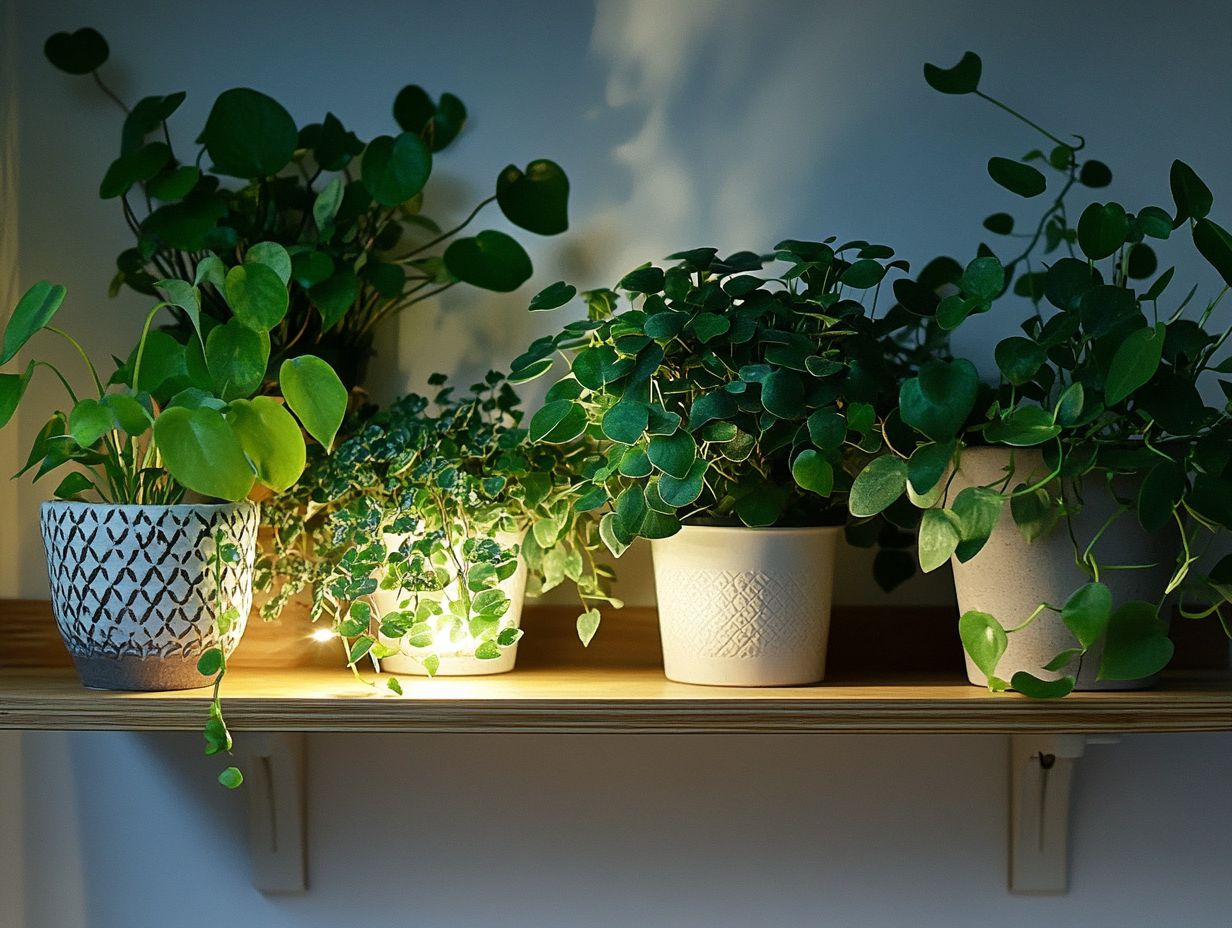
Many indoor plants, such as Aloe Vera and Chinese Evergreen (Aglaonema), have a remarkable ability to repel pests through their natural production of repellents or toxic compounds. This means you can deter harmful insects while ensuring the safety of your pets with non-toxic varieties, suitable for homes with pets.
Take Aloe Vera, for example. It contains compounds like saponins, which not only soothe skin irritations but also serve as a powerful deterrent against pests like aphids and mealybugs. Similarly, the Chinese Evergreen produces alkaloids that repel a variety of insects, reducing the chances of infestations. For those interested in indoor gardening, learning how to identify common indoor plant pests can also be beneficial in making it a reliable choice for your home.
By incorporating these pest-resistant indoor plants into your home, you ll elevate the aesthetic charm of your living spaces and minimize reliance on chemical pesticides. This approach cultivates a healthier indoor environment and champions sustainability by harnessing nature’s own defense mechanisms.
Start inspecting your plants today to ensure a vibrant indoor garden!
What Are Some Tips for Preventing Pest Infestations in Indoor Plants?
Preventing pest infestations in your indoor plants requires a thoughtful blend of proper care practices. Regular inspections are key, along with maintaining optimal humidity and soil moisture. You can also incorporate natural pest management strategies to support healthy growth while keeping pesky invaders at bay.
To ensure your indoor garden flourishes, keep your growing environment pristine. A clean space is crucial since any debris can attract unwanted pests. Regularly dusting off the leaves and cleaning the pots will enhance plant health and reduce potential pest habitats. For more effective strategies, consider following the best practices for indoor plant pest control.
By monitoring environmental conditions like temperature and light levels, you can create the perfect atmosphere for your plants, boosting their resilience. Additionally, including top indoor plants for bright spaces in your collection acts as a natural barrier, helping to fend off pests while enriching the biodiversity of your indoor sanctuary.
What Are Some Other Benefits of Having These Plants in Your Home?
Indoor plants like the Snake Plant and Peace Lily offer a wealth of benefits beyond their striking beauty and impressive pest resistance. These botanical wonders are not just visually appealing; they purify the air and elevate your mood. Plus, they’re non-toxic to pets, making them invaluable additions to any home or office.
These green companions work tirelessly to enhance indoor air quality by naturally filtering out toxins and releasing oxygen, resulting in a fresher and healthier environment. They can significantly reduce stress levels, allowing you to feel more relaxed in your surroundings.
In office settings, having indoor plants around can noticeably boost productivity. Research suggests that those who work alongside greenery often experience heightened creativity and focus.
All these benefits underscore the importance of incorporating such plants into your daily life, supporting both your physical and mental well-being.
How Can You Incorporate These Plants into Your Home Decor?
Incorporating indoor plants into your home decor can truly elevate your living spaces. Imagine using the unique patterns and vibrant foliage of hardy varieties like Cissus and Coleus to create visual interest and enhance the overall ambiance.
By thoughtfully grouping these plants based on their size or color, you can create a captivating display that naturally draws the eye. Choosing decorative pots not only highlights the beauty of each plant but also adds a personal flair to your decor.
Positioning them at varying heights lends depth and intrigue, especially when placed on shelves or window sills where they can bask in natural light. Consider crafting themed areas within a room; this can set a specific vibe or atmosphere, transforming indoor gardening into an engaging art form rather than just a functional task.
Frequently Asked Questions
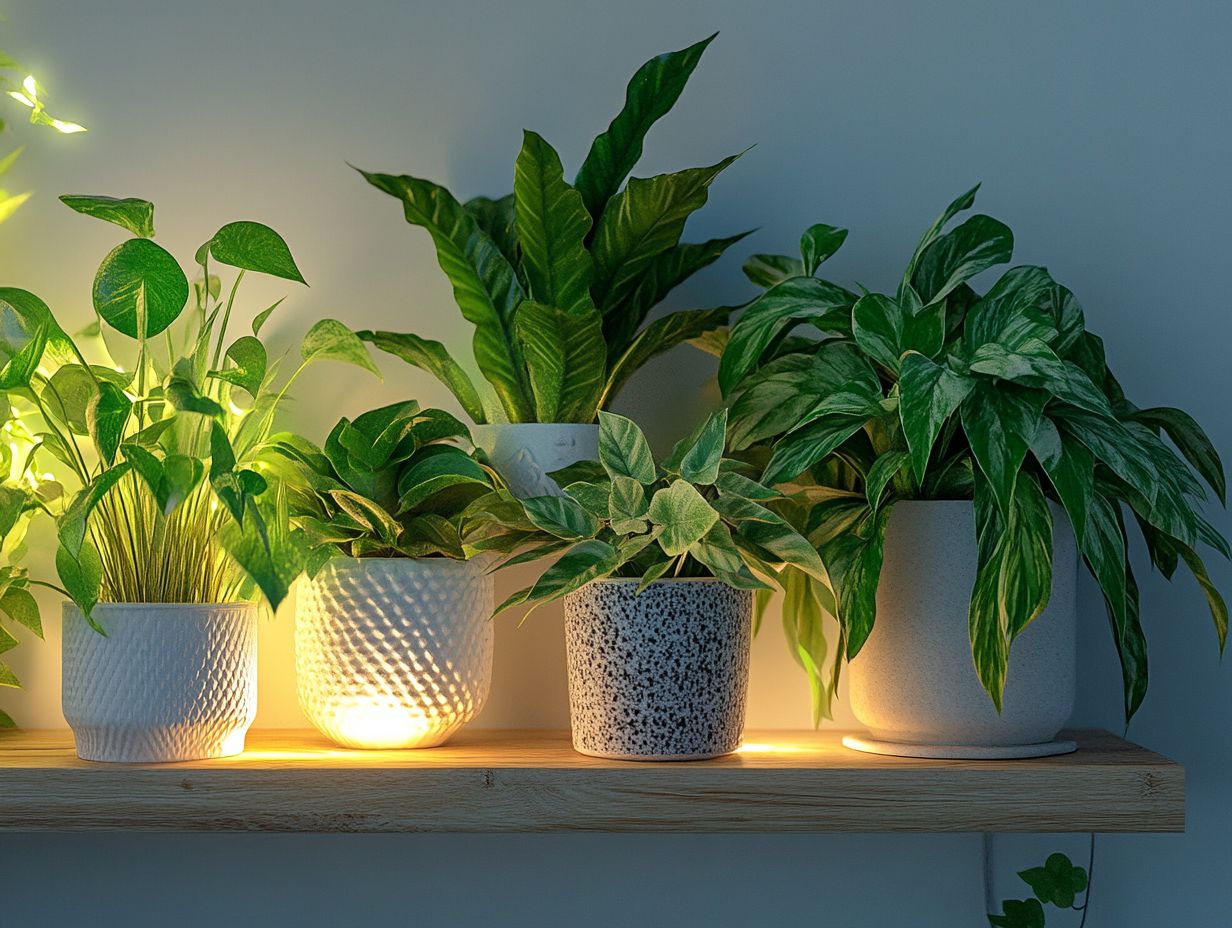
What are the 5 best indoor plants that are resistant to pests?
The 5 best indoor plants that are resistant to pests are spider plants, lavender, snake plants, marigolds, and chrysanthemums.
Why are spider plants resistant to pests?
Spider plants are resistant to pests because they contain a natural substance that keeps bugs away. This makes them unappealing to common household pests like mealybugs and spider mites.
How does lavender help repel pests?
Lavender has a strong scent that is pleasant to humans but repels pests like moths, flies, and mosquitoes. This makes it an effective natural pest control option for indoor plants.
What makes snake plants resistant to pests?
Snake plants have strong, sturdy leaves that are difficult for pests to penetrate. They also produce a unique oil that repels insects, making them a great choice for pest-resistant indoor plants.
Do marigolds attract pests?
No, marigolds are actually known for repelling pests such as aphids, whiteflies, and nematodes. They contain a compound called pyrethrum that acts as a natural insect repellent.
Start incorporating these plants today and enjoy a healthier, more vibrant home!
Can Chrysanthemums Be Grown Indoors?
Yes, chrysanthemums can be grown indoors and are a great choice for pest-resistant plants. Their flowers contain a natural insecticide called pyrethrin, making them effective at repelling pests like ants, roaches, and beetles.

